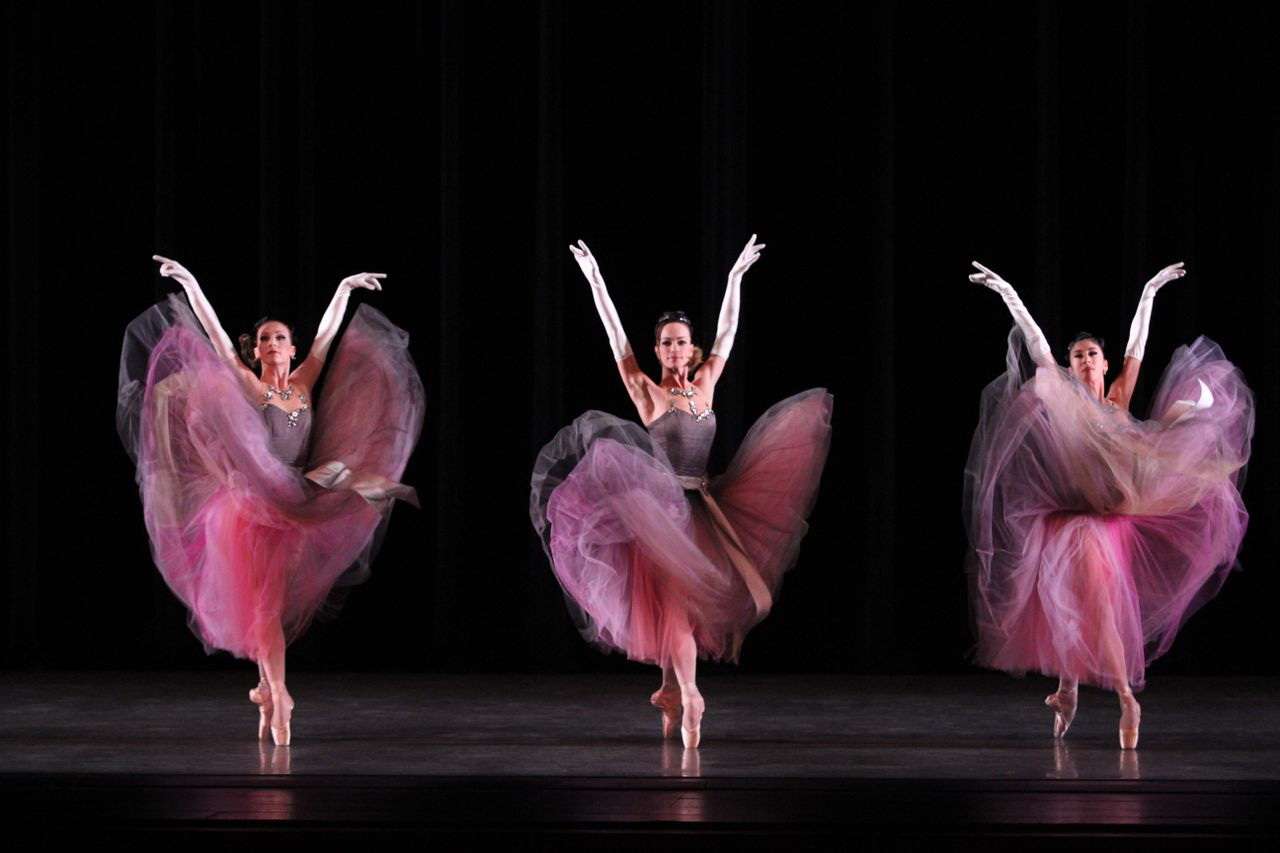|
Back
Following in the Master's Footsteps Miami
Broward Center for the Performing Arts, Fort Lauderdale
03/01/2013 - & March 2, 3*, 2013
George Balanchine: La Valse (Music by M. Ravel) – The Steadfast Soldier (Music by G. Bizet) – Tchaikovsky Pas de Deux (Music by P. I. Tchaikovsky)
Alexi Ratmansky: Symphonic Dances (Music by S. Rachmaninoff)
The Miami City Ballet, Tricia Albertson, Yann Trividic, Reyneris Reyes, Carlos Valdes, Ashley Knox, Shimon Ito, Nathalia Arja, Neil Marshall, Jeanette Delgado, Jovani Furlan, Mary Carmen Catoya, Renato Penteado, Kleiber Rebello, Renan Cerdeiro, Suzanne Limbruner, Jennifer Lauren, Chase Swatosh, Carlos Miguel Guerra, Didier Bramaz (soloists), corps de ballet and school apprentices
Opus One Orchestra, Gary Sheldon (Conductor)
Jean Rosenthal, Carlos Arditti, (Scenic Design), Karinska, David Mitchell, Haydée Morales, Adeline André and Istvan Dohar (Costume Design), Jean Rosenthal, John Hall, Mark Stanley (Lighting Design)

(© Joe Gato)
The last ballet and the main attraction for this program is Alexi Ratmansky's Symphonic Dances's entry into the standard repertory of Miami City Ballet. In an interview with the Miami Herald, Ratmansky seemed unwilling to label this ballet as one that mainly tells a story. Well, there might be a lot of truth in that, but when one first sees this gripping work, the narrative is where one's focus lies. The first several times I saw Martha Graham's Errand into the Maze it was hard to avoid concentrating on the characters of Theseus and the Minotaur. Now, however, naming them hardly seems relevant. This is likely my path for understanding Symphonic Dances, though who knows the trek others will take. I am sure everyone feels moments of Rebel Without a Cause, West Side Story and The Warriors among other love stories laden with gang activity, but this is not a story with a definite conclusion. There is stunning work by Nathalia Arja who uses her solid technique, as the lead female, to create an exceptional depth of feeling. Chase Swatosh and Suzanne Limbrunner made a gripping pair of lovers trapped in a most uncomfortably violent atmosphere; and Shimon Ito is memorable as the marked man on the run. What's going on? I'm not sure, but I was intensely involved. I heard audience members commenting on perceived lesbianism during the second dance, and I felt the men once left the stage on motorcycles. This is what makes seeing a work like this so satisfying. Everyone's perception has validity, though it doesn't seem logical to interpret the ending as one of optimism.
The middle section of Symphonic Dances can't help but feel influenced by part two of Balanchine's La Valse, this program's opener. La Valse has characters who are given names, perhaps “titles” is a better word, some sort of plot, though it is more like a symbolic nightmare, and a score that is also a very familiar part of the standard concert rep. Since I wasn't born until years after this masterpiece premiered, I can only know about its evolution through some reading and my own exposure for 30 years. It doesn't seem different than it did when I first saw it, but I am now different, so my perspective is ever changing. Tricia Albertson is the most strongly feminine lead one is likely to find; her lover, Yann Trividic, is the perfect masculine counterpart. Albertson's strength makes her descent all the more devastating. We don't feel sadness as her path is inevitable.
The second part of the program had two gems: The Steadfast Tin Soldier and Tchaikovsky Pas de Deux. With Soldier Balanchine took a rare trip into simple storytelling. He was so good that it is a shame he didn't choose this approach more often. Mary Carmen Catoya is a natural comedienne as she has shown before with her unforgettable Swanilda, a role that also has mechanical doll elements. Her soldier, Renato Penetado, is ideally paired. His strength, command and energy are utilized to create the perfect essence of a military man trying to charm a potential lover.
The Tchaikovsky feels as fresh as if this were its premiere. Jeanette Delgado attacked the tricky steps and spins as if it were as simple as taking a breath. Her partner, Kleiber Rebello, had to be alert in order to make an impact and ensured that the piece ended up, as is so often the case, the knockout of the afternoon.
But the most pressing question is whether or not Symphonic Dances will achieve the iconic status that La Valse has so deservedly earned. After having had a couple doses of the Ratmansky and very much appreciating its craft, I don't have an urge to see it again soon. On the other hand, put La Valse on any program at Miami City Ballet and I will thrill with anticipation.
A program of such variety is a killer for any group of musicians. Luckily for Miami City Ballet it has the Opus One Orchestra under the masterful leadership of Gary Sheldon. Right from the start with La Valse there was a pronounced crispness with tempos being taken at a pace essential to the choreography. There were no moments of languor.
Jeff Haller
|